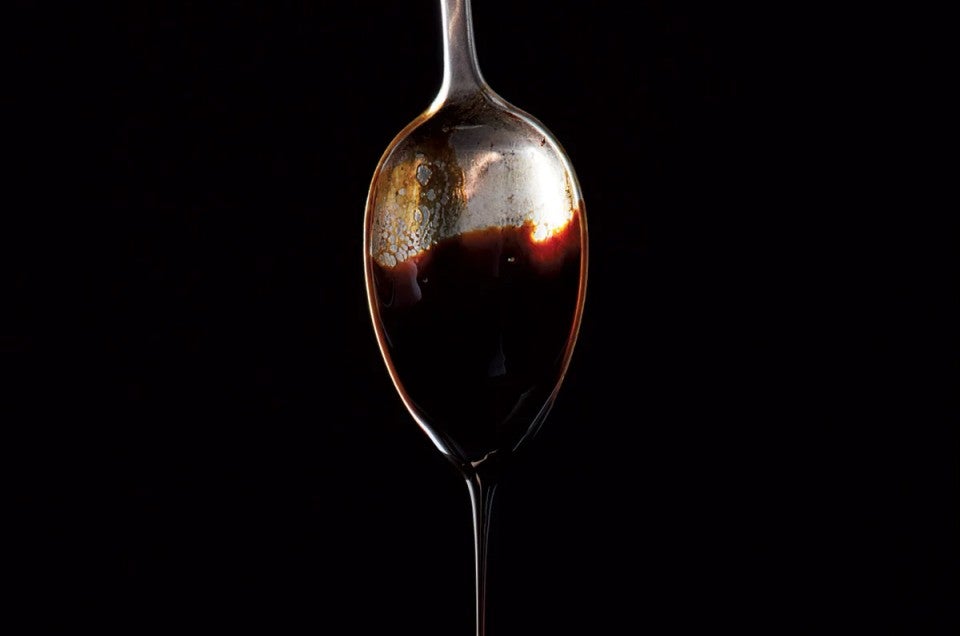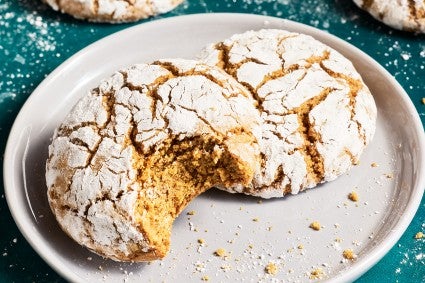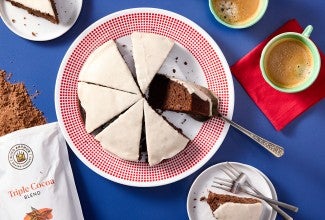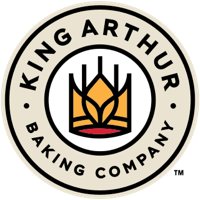Light, dark, and blackstrap: Breaking down the different types of molasses
The secret star of holiday baking.


As holiday baking season kicks into high gear, it’s time for molasses to shine. This warm, sweet, and slightly bitter syrup underpins many classic holiday and wintertime recipes. Whether you’re cutting out gingerbread people, building a gingerbread house, or filling a tin with soft molasses cookies, using the right kind of molasses is key.

The flavor of molasses can vary a lot, and that’s mostly due to how it’s processed. Molasses is made by crushing up sugar cane or sugar beets, extracting the juice that’s released, then boiling that juice down until it forms sugar crystals. When the sugar crystals have been removed (to go on to be refined into different kinds of sugar), a thick, dark syrup remains, which is molasses. It generally comes in three varieties:
If you stop at the first boil, you’ll have “light” molasses, which has a delicate, sweet flavor. Some manufacturers label this molasses from the first boil as “regular,” “mild,” or “Barbados” molasses.
If you boil the molasses down again, you’ll create “dark,” “full,” or “robust” molasses, which has a thicker texture and less-sweet flavor than light molasses.
And if you boil the molasses down a third and final time, you’ll end up with “blackstrap” molasses, which is ultra-dark, thick, and notably bitter, as most of its sugar has been extracted during the boiling process.
It’s worth noting here that there can be a lot of variability between different brands of molasses — what one manufacturer calls “mild” might have a much stronger flavor than another that’s labeled “robust.” These descriptors are quite subjective, and as an agricultural product, molasses can run the gamut in flavor from delicate and floral to caramelized and spicy, depending on how it’s been made and where it’s from. If you can, taste a bit of your molasses before you start baking to gauge its flavor. The good news is that these flavor differences, while most prominent when tasted plain, do tend to lessen during baking, as long as you’re not using blackstrap molasses (see below), so you can generally use what you’ve got on hand, even if the flavor may vary from what the recipe calls for.
Another difference between types of molasses is whether or not it has been “sulphured.” Some manufacturers process sugar cane into molasses when it’s young or “green.” To keep it preserved until ready for processing, it can be treated with sulfur dioxide, making the resulting molasses “sulphured.” Some tasters can pick up on chemical-tasting notes in sulphured molasses and prefer the flavor of unsulphured molasses made from mature or ripe sugar cane. Unsulphured molasses is the most common kind that you’ll find at the grocery store.

The type of molasses you reach for when baking depends on the flavor you’re looking to achieve. In general, first-boil light, unsulphured molasses is the most versatile type of molasses to stock in your pantry. It has a prominent sweetness and just a hint of bitterness and blends well with other flavors without taking over. Light (which might also be labeled regular, original, mild, or Barbados) molasses works well in everything from Fast Frosted Gingerbread Cookie Bars to traditional New England Anadama Bread to festive Gingerbread Crinkle Cookies or Gingerbread Waffles.
If you want rich, bold molasses flavor to shine in your recipe and don’t mind a more bitter edge, second-boil dark molasses is a good choice. Dark (aka robust, full, or second) molasses would be at home in bold traditional Gingerbread, intense Chocolate Molasses Thumbprints, this easy Glazed Chocolate Gingerbread Cake, or crusty Sourdough Pumpernickel Bread.
Third-boil blackstrap molasses, however, has a very specific flavor profile, and should really only be used in recipes that call for it. Its intense, bitter flavor and signature dark color make it the least versatile kind of molasses to bake with, but delicious when planned for. This traditional Jamaican Sweet Potato Pudding uses blackstrap molasses for its deep flavor, which is balanced by sweetness from coconut sugar, raisins, and sweet potatoes. But if your recipe does not specify to use blackstrap molasses, assume that light or dark (not blackstrap) is intended.

Molasses has a distinctive flavor all its own, but in a pinch, you can substitute another liquid sweetener. The best choices are cane syrup, honey, sorghum, or dark corn syrup, which can generally be substituted 1:1 for molasses. But note that the color and flavor of your final baked good will be quite different than what was intended, especially if the recipe calls for a lot of molasses.
Cover photo by Mark Weinberg; food styling by Erin Jeanne McDowell.



January 5, 2025 at 10:46am
I have a recipe for Durgin-Park Indian Pudding that I would like to make (memories of my childhood!) It calls for "black" molasses. Do you think this might be blackstrap or simply dark molasses? I don't want to ruin the dish by making it with the wrong kind. Thanks.
March 1, 2025 at 11:10am
In reply to I have a recipe for Durgin… by Irene (not verified)
Hi Irene, from what I've read about this recipe and molasses in general, "black molasses" does refer to blackstrap. However, if you're afraid of using blackstrap, I'm sure a dark molasses would also work in this recipe.
December 29, 2024 at 10:35pm
Every time I read a warning about using blackstrap molasses in recipes that don't specifically call for it, I smile and sigh a bit. I use blackstrap exclusively because it's a brilliant way to make sweets less intensely sweet and more intensely flavorful. I know that not everyone feels that way, but I always wish that food and recipe writers would add the caveat just to give the okay to fellow intense flavor-lovers who might not feel comfortable making substitutions!
February 22, 2025 at 1:47pm
In reply to Every time I read a warning… by Sue (not verified)
Thanks for offering this perspective, Sue!
December 22, 2024 at 1:40pm
Any other blog would have given a brand name or source for light, dark and blackstrap varieties of molasses. KA is never bashful bout touting their own products but when you write about something you don't sell, would it hurt to give us a little help here? I use Grandma's Molasses. It is unsulphured and I believe would be categorized Light but I am not sure.
February 16, 2025 at 10:31am
In reply to Any other blog would have… by Joe Potts (not verified)
Hi Joe, you're right, Grandma's Original Molasses is an unsulphured, light molasses. That's what I use too!
December 22, 2024 at 12:13pm
Hi Afton,
Thanks so much for this interesting blog. I learned a lot about molasses. I have a question though, the only molasses I see in the supermarket, at least where I shop is blackstrap. Where can I find any of the other type of molasses?
February 16, 2025 at 10:25am
In reply to Hi Afton, Thanks so much for… by Norma (not verified)
Hi Norma, I'm sure availability varies by location, but in the Northeast, Grandma's Original Molasses is fairly easy to find, and it's a light, unsulphered molasses. You can also generally find a wide variety of light molasses options on Amazon or other online resources.
December 20, 2024 at 11:30am
I use date molasses, as I have allergies to corn & cane sugar.